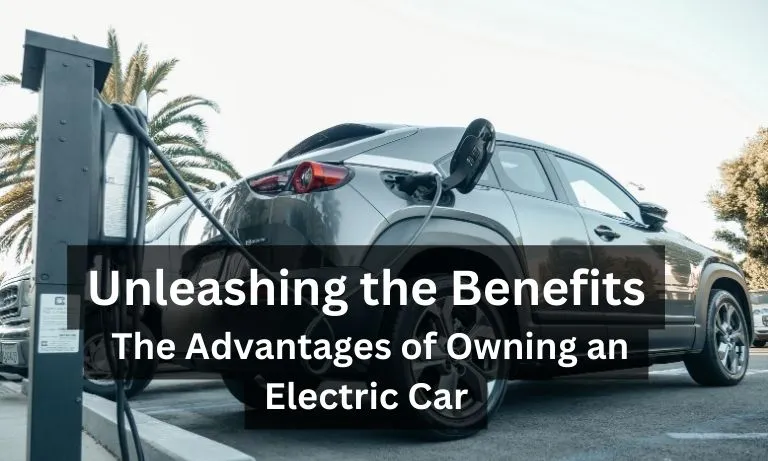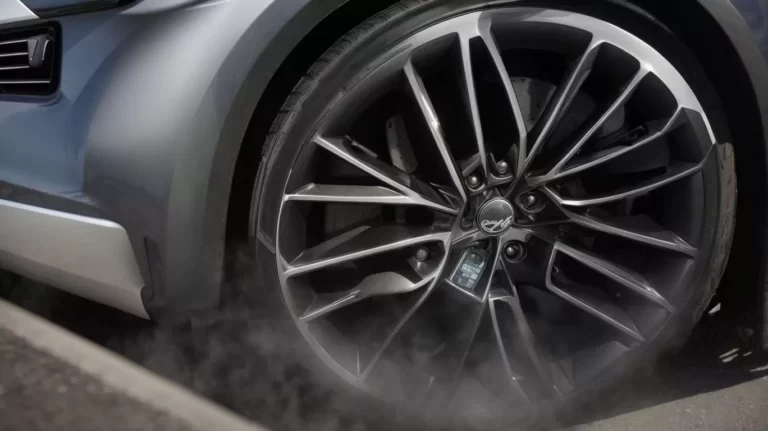Hybrid vs. Electric Cars: Discover the Perfect Choice for You

Are you considering purchasing a new car but feeling overwhelmed by the options? With environmental concerns on the rise, the debate between hybrid and electric cars has become more prevalent. In this article, we will explore the differences between these two types of cars and help you determine which one is the best fit for you. So, if you’re feeling perplexed about which car to choose, keep on reading.
What Are Hybrid and Electric Cars?
Hybrid and electric cars are two eco-friendly alternatives to traditional gasoline-powered vehicles. These types of cars have become increasingly popular due to their improved fuel efficiency and reduced emissions.
Hybrid cars utilize a combination of a gasoline engine and an electric motor. This allows for better fuel efficiency and lower emissions. They also have the ability to recharge their battery through regenerative braking and can switch between the electric motor and gasoline engine as needed. This makes them a great option for those who want improved fuel efficiency but still need the convenience of a gasoline engine for longer trips.
On the other hand, electric cars are powered solely by an electric motor and rely entirely on batteries for propulsion. They produce zero emissions and offer a smooth and quiet driving experience. While their range may be limited compared to other types of cars, they can easily be recharged at home or at charging stations.
When deciding between hybrid and electric cars, it is important to consider your driving habits, daily mileage, access to charging infrastructure, and environmental concerns. Hybrid cars are a good choice for those who need longer range and flexibility, while electric cars are ideal for shorter commutes and reducing carbon footprint.
How Do Hybrid and Electric Cars Work?
Hybrid and electric cars operate differently but both aim to reduce emissions and increase fuel efficiency. Here is a step-by-step breakdown of how each type works:
- Hybrid Cars:
- The engine powers the car by burning fuel and simultaneously charges the battery.
- The battery stores energy generated during braking and deceleration through regenerative braking.
- When the car is at low speeds or idling, it switches to electric power, reducing fuel consumption.
- The engine and electric motor work together to provide power when needed, resulting in improved fuel efficiency.
- Electric Cars:
- Electricity stored in a battery powers the vehicle.
- The battery can be charged by plugging into an electrical source or through regenerative braking.
- An electric motor converts the stored energy into mechanical power, propelling the car.
- Electric cars produce zero tailpipe emissions, making them a more environmentally friendly option.
The first electric car was invented in the nineteenth century by Thomas Davenport. However, due to limitations in battery technology, they were overshadowed by gasoline-powered vehicles. It was only in the late twentieth century that advancements in battery technology allowed for the development of practical electric cars. The concept of hybrid cars emerged during this time as a transition between traditional gasoline-powered cars and fully electric vehicles, offering improved fuel efficiency and reduced emissions.
What Are the Differences Between Hybrid and Electric Cars?
As the automotive industry continues to evolve, more and more drivers are considering alternative options to traditional gasoline-powered cars. Two popular choices are hybrid and electric cars, but what sets these two types of vehicles apart? In this section, we will delve into the key differences between hybrid and electric cars, including their fuel source, battery usage, driving range, and cost. By understanding these distinctions, you can determine which type of car may be the best fit for your lifestyle and needs.
1. Fuel Source
The type of fuel used is a critical factor to consider when comparing hybrid and electric cars. Here are some steps to understand the fuel sources of each:
- Hybrid Cars: Hybrid cars use both an internal combustion engine (ICE) and an electric motor. The fuel source for hybrid cars is either gasoline or diesel. The ICE powers the vehicle at higher speeds or when more power is needed, while the electric motor assists during acceleration or at lower speeds.
- Electric Cars: Electric cars, on the other hand, run solely on electricity. They store energy in rechargeable batteries. The fuel source for electric cars is the electricity grid, which can be generated from various sources such as coal, natural gas, nuclear, hydro, solar, or wind power.
Understanding the fuel source is crucial in determining the environmental impact and overall efficiency of these types of vehicles.
2. Battery Usage
Electric cars and hybrid cars both rely on batteries to power their engines, but there are differences in how they utilize and manage those batteries. Here are some key points to understand about the usage of batteries in these vehicles:
- Charge and discharge: Both electric cars and hybrid cars rely on their batteries to store and release energy. Electric cars exclusively use the battery to power the vehicle, while hybrid cars use a combination of the battery and internal combustion engine.
- Regenerative braking: Both types of cars utilize regenerative braking, which converts kinetic energy into electrical energy to recharge the battery. This feature helps extend the range of electric and hybrid cars.
- Battery capacity: Electric cars generally have larger and more powerful batteries compared to hybrid cars. This allows electric cars to have a longer driving range and more power for acceleration.
- Charging infrastructure: Electric cars require access to charging stations to recharge their batteries. Hybrid cars, on the other hand, do not rely solely on charging infrastructure since their batteries also charge while driving through regenerative braking and the internal combustion engine.
Having an understanding of how batteries are used in electric and hybrid cars can assist you in making an informed decision when selecting the right vehicle for your needs and preferences.
3. Driving Range
The driving range of a hybrid or electric car refers to the distance it can travel on a single charge or tank of fuel. Here are some steps to consider when evaluating the driving range of these vehicles:
- Research the manufacturer’s estimated driving range for the specific model you’re interested in.
- Consider your daily driving habits and typical commuting distance. Ensure the car’s driving range is sufficient to meet your needs without frequent recharging or refueling.
- Take into account the availability of charging stations or fueling stations along your regular routes and at your destination.
- Keep in mind that driving conditions and habits can affect the actual driving range. Factors like speed, temperature, terrain, and use of air conditioning or heating can impact the range.
- If long trips are a regular occurrence, consider a hybrid model with a longer driving range, or opt for a plug-in hybrid or electric car with a larger battery capacity.
The advancement of battery technology has greatly improved the driving range of electric cars over the years. In the past, earlier models had ranges of around 100 miles, but now many electric vehicles can travel over 200 miles on a single charge.
4. Cost
The cost is a crucial factor to consider when deciding between hybrid and electric cars. Here are some key points to keep in mind:
- Fuel Source: Hybrid cars use both gasoline and electric power, while electric cars rely solely on electricity. Gasoline is typically more expensive than charging an electric car, potentially resulting in savings for electric car owners.
- Battery Usage: Hybrid cars have smaller batteries compared to electric cars, making them generally less expensive to replace. While electric car batteries can be costly, their prices are decreasing as technology advances.
- Driving Range: Electric cars typically have a limited driving range compared to hybrid cars. If you have a long commute or frequently travel long distances, a hybrid car may be a better option to avoid the need for frequent charging.
Hybrid cars generally have a lower upfront cost compared to electric cars. However, electric cars may qualify for government incentives and tax credits, which can help offset the higher initial price.
Considering the above factors, it is important to evaluate your driving habits, budget, and environmental impact before making a decision.
Pro-tip: Calculate the total cost of ownership, including fuel or electricity costs, maintenance, and potential incentives, to get a more accurate understanding of the long-term affordability of hybrid and electric cars.
What Are the Benefits of Hybrid Cars?
When considering the purchase of a new vehicle, the decision between a hybrid car and an electric car can be daunting. To help you make an informed choice, let’s first explore the benefits of hybrid cars. From improved fuel efficiency to lower emissions and operating costs, hybrid cars offer a variety of advantages for environmentally-conscious and cost-conscious consumers alike. In this section, we’ll delve into the specific benefits that make hybrid cars a popular choice among car buyers.
1. Better Fuel Efficiency
When comparing hybrid and electric cars, one of the key advantages of hybrid cars is their improved fuel efficiency. Here are some steps to consider when looking for better fuel efficiency in a hybrid car:
- Look for a hybrid car that combines a gasoline engine and an electric motor. This allows the car to switch between the two power sources, optimizing fuel consumption.
- Consider hybrid cars with regenerative braking systems. These systems capture and store energy that is typically lost during braking, which can then be used to power the electric motor and decrease reliance on the gasoline engine.
- Pay attention to the fuel economy ratings of different hybrid models. Look for cars with higher MPG (miles per gallon) ratings, as this indicates better fuel efficiency.
- Consider the size and weight of the hybrid car. Smaller and lighter hybrid cars tend to have better fuel efficiency than larger, heavier models.
- Research the hybrid drivetrain technology used in different models. Some hybrids use a parallel hybrid system, where both the gasoline engine and electric motor can power the car. Others use a series hybrid system, where the gasoline engine is only used to charge the electric motor’s battery.
By following these steps, you can select a hybrid car that offers improved fuel efficiency, allowing you to save on fuel costs and reduce your environmental impact.
2. Lower Emissions
Lower emissions are one of the key benefits of hybrid and electric cars. By reducing the amount of greenhouse gases and pollutants released into the atmosphere, these vehicles contribute to a cleaner and healthier environment.
Here are some steps to showcase how hybrid and electric cars help in lowering emissions:
- Electric power: Electric cars run solely on electricity, which means they produce zero tailpipe emissions. They don’t burn any fossil fuels, resulting in no direct emissions of carbon dioxide or other harmful pollutants.
- Efficient engines: Hybrid cars use a combination of an internal combustion engine and an electric motor. The electric motor assists the engine, reducing the workload and emissions. The engine is also optimized for efficiency, resulting in lower emissions compared to conventional vehicles.
- Regenerative braking: Both hybrid and electric cars use regenerative braking technology, which captures and stores energy that is usually lost during braking. This stored energy is then used to power the vehicle, reducing the need for the engine to work harder and emit more pollutants.
True story: John, an environmentalist, decided to switch to an electric car to lower his carbon footprint. He was amazed at how quiet and smooth the driving experience was. Not only did he contribute to lower emissions, but he also saved money on fuel costs. John’s decision to embrace electric transportation was not only beneficial for him but also for the environment and future generations.
3. Lower Operating Costs
When it comes to the lower operating costs of hybrid and electric cars, there are several factors to consider. Here are some steps to help you understand how these cars can be more cost-effective:
- Lower fuel costs: Both hybrid and electric cars offer lower fuel costs compared to traditional gasoline vehicles. Electric cars don’t require gasoline at all, while hybrids use a combination of gasoline and electricity.
- Reduced maintenance expenses: Hybrid and electric cars generally have fewer moving parts, which means less wear and tear. This can result in lower maintenance costs over time.
- Tax incentives: Many governments provide tax incentives and rebates for purchasing hybrid and electric vehicles. These incentives can help offset the initial purchase cost.
- Regenerative braking: Hybrid and electric cars use regenerative braking systems, which convert energy from braking into electricity. This helps recharge the battery and reduces wear on brake pads, saving money on brake replacements.
- Electricity costs: While electric cars require electricity to charge, the cost of charging is typically lower than the cost of gasoline. Charging at off-peak hours or utilizing public charging stations can further reduce electricity costs.
Considering these factors can help you evaluate the lower operating costs of hybrid and electric cars and determine which option is more financially beneficial for your needs.
What Are the Benefits of Electric Cars?
As we become more conscious of our environmental impact and seek ways to reduce it, electric cars have become a popular alternative to traditional gasoline-powered vehicles. But what exactly makes them a better choice? In this section, we will discuss the benefits of electric cars, including their zero emissions, lower operating costs, and potential government incentives. These factors make electric cars an attractive option for those looking to reduce their carbon footprint and save money in the long run.
1. Zero Emissions
Zero emissions is one of the major advantages of electric cars, making them a more environmentally friendly option compared to traditional gasoline-powered vehicles. To better understand the concept of zero emissions, here are some steps to keep in mind:
- Electric power: Electric cars run on electricity stored in their batteries, eliminating the need for burning fossil fuels.
- No tailpipe emissions: Unlike internal combustion engines, electric cars produce no exhaust gases, significantly reducing air pollution and greenhouse gas emissions.
- Renewable energy: Charging an electric car with electricity from renewable sources, such as solar or wind power, further decreases its carbon footprint.
- Positive impact: Zero emissions from electric cars contribute to improving air quality and combating climate change.
Fact: According to the International Energy Agency, the number of electric cars on the road globally exceeded 10 million in 2020, demonstrating the increasing adoption of zero-emission vehicles.
2. Lower Operating Costs
Lower operating costs are one of the significant benefits of both hybrid and electric cars. Here are some steps to consider to maximize these savings:
- Reduce fuel costs: Both hybrid and electric cars have higher fuel efficiency compared to traditional gasoline vehicles. This means spending less on fuel and more on other priorities.
- Lower maintenance costs: Electric cars have fewer moving parts, which leads to lower maintenance and repair costs. Additionally, hybrid cars may have regenerative braking systems that reduce wear on brake pads.
- Take advantage of incentives: Many governments offer incentives such as tax credits, rebates, and grants for purchasing hybrid or electric cars. Research and utilize these incentives to reduce the overall cost of ownership.
- Consider long-term savings: While hybrid cars may have higher upfront costs compared to traditional vehicles, the long-term savings from lower fuel and maintenance expenses can make them more cost-effective in the long run.
By following these steps, you can enjoy the benefits of lower operating costs for both hybrid and electric cars while also making a positive impact on the environment.
3. Government Incentives
Government incentives can play a crucial role in the decision-making process when choosing between hybrid and electric cars. These incentives aim to promote the adoption of eco-friendly vehicles and can provide financial benefits for potential buyers.
- Research: Explore the various government incentives available in your region. Check for tax credits, rebates, grants, or subsidies specifically targeted towards hybrid or electric vehicles.
- Eligibility criteria: Understand the eligibility requirements for each incentive program. Some incentives may be limited to certain types of vehicles, such as fully electric cars or plug-in hybrids.
- Financial savings: Calculate the potential savings offered by these government incentives. Consider the amount of the incentive, any limitations or caps, and how it will impact the overall cost of owning the vehicle.
Government incentives can significantly reduce the initial purchase cost and ongoing expenses of hybrid and electric cars. They can make these vehicles more affordable and attractive options for environmentally conscious individuals.
Which Car Is Right for You?
Choosing between a hybrid and an electric car can be a difficult decision. Each option has its own unique benefits and considerations. In this section, we will discuss how to determine which car is right for you. We will take a closer look at your driving habits, budget, and environmental impact to help you make an informed decision. By the end, you will have a better understanding of which type of car aligns with your needs and preferences.
1. Consider Your Driving Habits
When deciding between hybrid and electric cars, it’s important to consider your driving habits. Here are some steps to help you make the right choice:
- Analyze your daily commute: Consider the distance you typically travel and whether it falls within the electric range of an electric car. If your daily commute is short and you have access to charging stations, an electric car may be a suitable option.
- Assess your driving patterns: If you frequently take long trips or have a job that requires extensive driving, a hybrid car with its longer driving range and ability to switch to gasoline mode may be more practical.
- Evaluate your charging options: Determine if you have access to convenient charging stations, both at home and in your area. If there are limited charging stations available, a hybrid car may be a better fit.
- Consider your environmental impact: If reducing emissions is a priority, an electric car is the better choice as it produces zero tailpipe emissions. However, it’s important to keep in mind that manufacturing electric car batteries also has its own environmental impact.
- Factor in your budget: Electric cars tend to have higher upfront costs, but their lower operating and maintenance costs can offset this over time. Hybrid cars may have a lower initial price but will still require regular maintenance like traditional gasoline vehicles.
2. Consider Your Budget
When deciding between a hybrid or electric car, it’s important to take your budget into consideration. Here are some steps to help you assess your budget:
- Research the cost: Calculate the initial cost of both hybrid and electric cars. Keep in mind that electric cars generally have a higher upfront price due to the cost of the battery.
- Evaluate potential savings: Consider the potential savings in fuel costs and maintenance expenses. Electric cars have lower operating costs since they run on electricity instead of gasoline, and they require less frequent maintenance.
- Look for incentives: Check for any government incentives or tax credits available for purchasing a hybrid or electric car. These incentives can help offset the higher initial cost.
- Assess charging infrastructure: Take into account the availability and cost of charging stations in your area. If you don’t have easy access to charging, the cost of installing a home charging station should be factored into your budget.
Pro-tip: Don’t forget to also consider any long-term savings and environmental benefits when evaluating your budget for a hybrid or electric car.
3. Consider Your Environmental Impact
When deciding between a hybrid or electric car, it’s important to consider the environmental impact. Here are some steps to help you make an informed decision:
- Emissions: Evaluate the emissions produced by each type of vehicle. Electric cars produce zero emissions, while hybrid cars still emit some greenhouse gases. Consider the impact on air quality and global warming.
- Energy source: Research the source of electricity used to charge electric cars. If it comes from renewable sources, such as solar or wind power, it further reduces the environmental impact.
- Manufacturing: Assess the manufacturing process of both types of cars. Electric cars typically have a higher carbon footprint during manufacturing due to battery production, but they make up for it with zero emissions during operation.
- Infrastructure: Determine the availability and accessibility of charging stations in your area. If there are ample charging stations, owning an electric car can be more convenient and environmentally friendly.
Considering the environmental impact is crucial in choosing the right car for you, and by following these steps, you can make an environmentally conscious decision.






